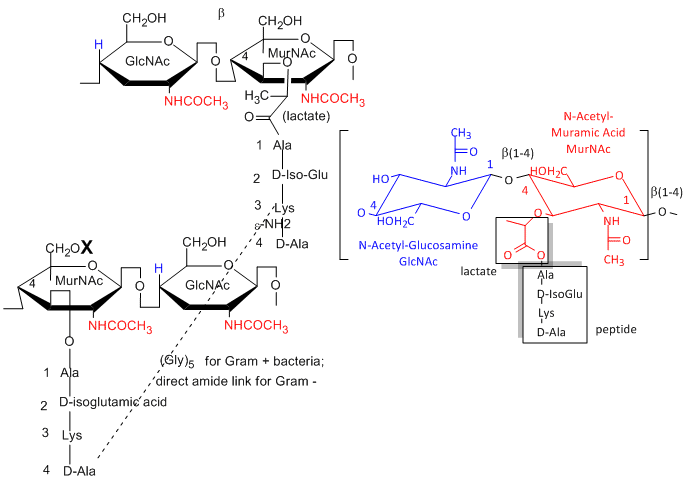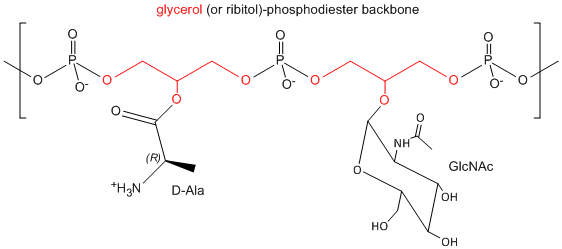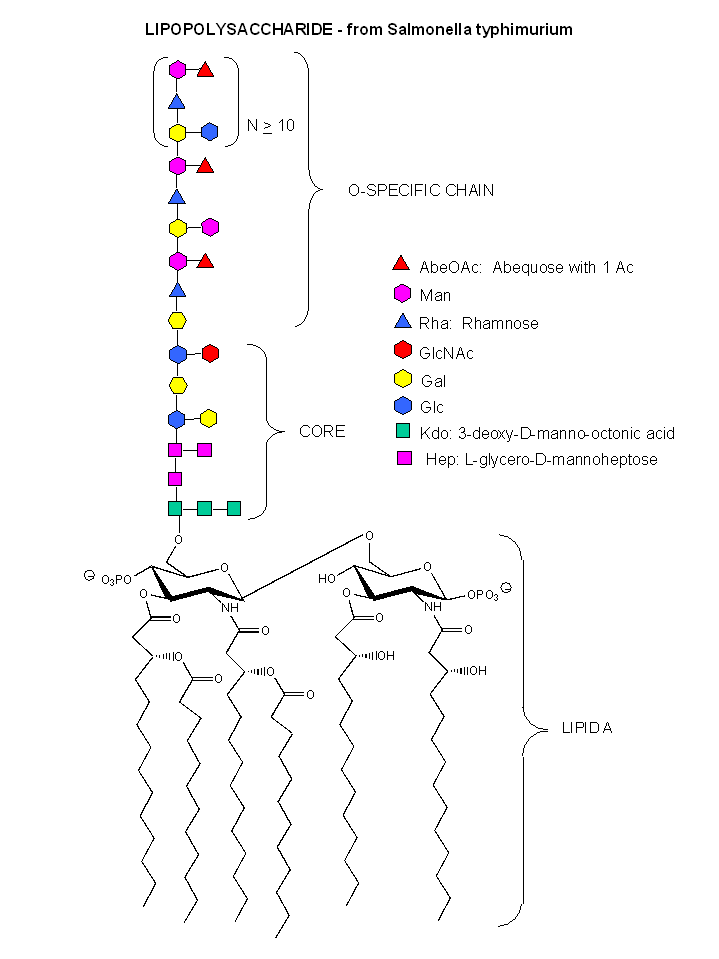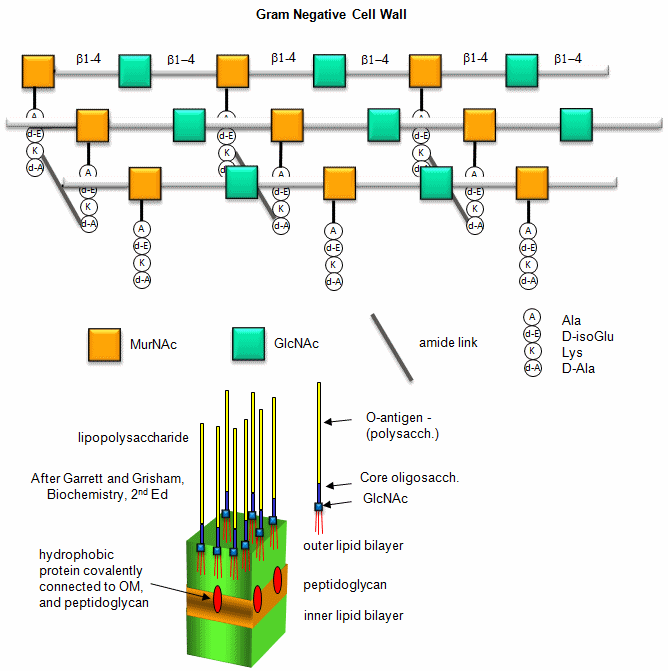B2. Cell Walls
- Page ID
- 132674
In contrast to eukaryotic cells, bacteria cells have a cell wall in addition to a lipid bilayer membrane. These are essentially carbohydrate polymers which offer protection from exterior hypotonic condition and the high internal osmotic pressures, preventing swelling and bursting of the cells. The membrane consist of a peptidoglycan. Two types exists.
Gram positive bacteria
These bacterial can be stained with Gram stain. The wall consists of a GlcNAc (b 1->4) MurNAc repeat . This is similar to the GlcNAc (b 1->4) GlcNAc homopolymer chitin, except that every other GlcNAc contains a lactate molecule covalently attached in an ether-linkage to the C3 hydroxyl to form the monomer N-Acetylmuramic acid. A tetrapeptide (Ala-D-isoGlu-Lys-D-Ala) is attached in amide link to the carboxyl group of the lactate in MurNAc. The GlcNAc (b 1->4) MurNAc strands are covalently connected by a pentaglycine bridge through the epsilon amino group of the tetrapeptide Lys on one strand and the D-Ala of a tetrapeptide on another strand.

One final structure is found in Gram + membranes. Techioic acids are often attached to the C6 of MurNAc. Teichoic acid is a polymer of glycerol or ribitol to which alternative GlcNAc and D-Ala are linked to the middle C of the glycerol. Multiple glycerols are linked through phosphodiester bonds. These teichoic acids often make up 50% of the dry weight of the cell wall, and present a foreign (or antigenic) surface to infected hosts. These often serve as receptors for viruses that infect bacteria (called bacteriophages).
Figure: Teichoic Acid

Figure: Gram Positive Bacterial Cell Wall

![]() Jmol: Updated Peptidoglycan glycosyl transferase Jmol14 (Java) | JSMol (HTML5)
Jmol: Updated Peptidoglycan glycosyl transferase Jmol14 (Java) | JSMol (HTML5)
Gram negative bacteria
These bacterial can NOT be stained with Gram stain. The wall consists of the same structure as in Gram positive bacteria, but the GlcNAc (b 1->4) MurNAc strands are covalently connected through a direct amide bond between the epsilon amino group of the tetrapeptide Lys on one strand and the D-Ala of a tetrapeptide on another strand. (i.e. no pentaGly spacer). In addition, Gram negative bacterial don't have teichoic acid polymers. Rather they have a second, outer lipid bilayer. The cell wall is sandwiched between the inner and outer bilayers. The space between the lipid bilayers is called the periplasmic space. A hydrophobic protein covalently attaches (through an amide link from a protein Lys) to the cell wall at the last amino acid in the tetrapeptide unit of the wall (actually diaminopimelic acid which replaces about 10% of the D-Ala in the cell wall). The N-terminal of the hydrophobic proteins attaches to the outer lipid membrane through a Ser. The outer membrane is coated with a lipopolysaccharide (LPS) of varying composition. The LPS determines the antigenicity of the bacteria. The different LPS are called the O-antigens.
Figure: A detailed view of LPS




